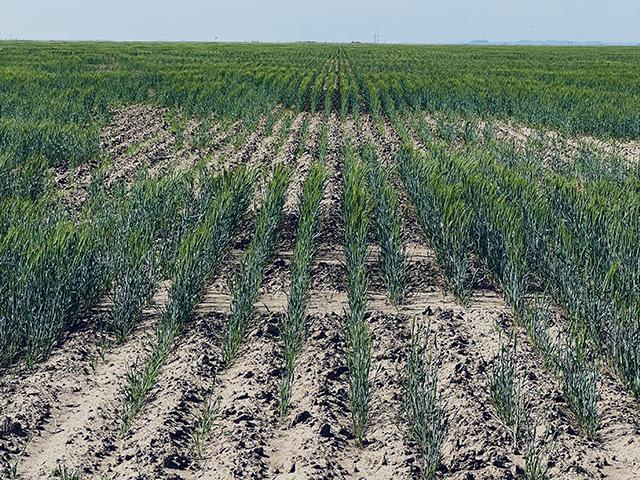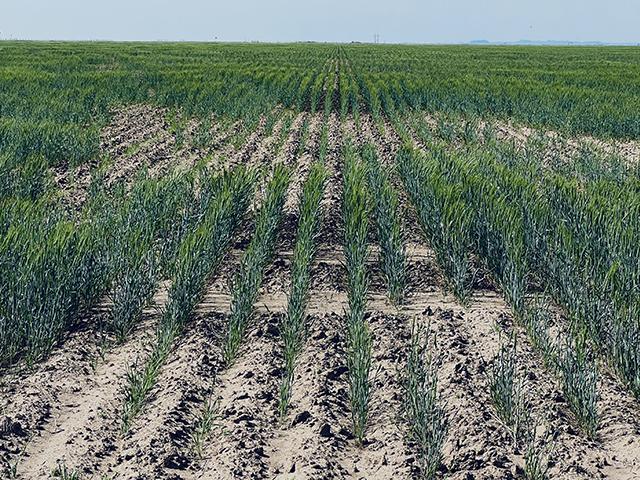Ag Policy Blog
Senators Introduce Wheat Crop Insurance and Livestock Disaster Bills
WASHINGTON (DTN) -- Reflecting some concerns over drought aid and crop insurance support for producers, U.S. senators have introduced separate bills to deal with some of the issues they have heard about with those programs.
Each of these issues will likely be taken up as the Senate Agriculture Committee looks to put together its version of the next farm bill.
Sens. Roger Marshall, R-Kan., and Michael Bennet, D-Colo., on Thursday introduced a bill to allow farmers more options to insure wheat enterprise units.
Kyler Millershaski, president of the Kansas Association of Wheat Growers explained, "On many farms across the breadbasket of America, wheat production falls into two main categories when looking at it from a management standpoint, which is fallow wheat and continuous wheat."
As Millershaski explained, continuous wheat is planted in the fall after a crop such as soybeans or corn has been harvested, whereas fallow wheat is planted earlier in the fall after the ground has sat idle for the winter and summer.
"While these two categories of wheat may be from the same bag of seed, they are treated like they are different crops. They both have different yield expectations and fertilizer needs as well as difficulties with weed pressure or moisture availability in the soil," Millershaski said.
Due to the different yield expectations, inputs are applied differently to keep the crop profitable so the farmer can pay his bills and stay in business. However, in years when the weather doesn't cooperate and crop insurance becomes a necessary tool, the two styles of wheat management are treated as the same and the yields are averaged together.
"This means the higher yielding fallow wheat with a higher cost of production isn't as protected as it should be," Millershaski said. "We are already able to segregate wheat by irrigated and dryland production, the difference between fallow wheat and continuous is almost as vast as the difference in irrigated and non-irrigated."
He added, "Making the change to be able to separate the two cropping styles would be a great benefit to wheat farmers by allowing them to protect their crops and operations effectively, giving them more confidence in their business decisions, and bringing an important tool (crop insurance) up to date with modern farming practices."
P[L1] D[0x0] M[300x250] OOP[F] ADUNIT[] T[]
At present farmers do not have the option through the Risk Management Agency (RMA) to insure wheat enterprise units by fallow and continuous separately and must combine them, Marshall explained in a news release.
"You can have a fallow Actual Production History (APH) and continuous APH that are reported separately but ultimately the producer may only have a blended enterprise unit that does not consider the APH separately even though it is reported separately," Marshall said. "This bill would direct the RMA to provide more options, still actuarially sound, to wheat farmers."
Marshall added, "The 1,200-year drought in the Western United States has hit the Breadbasket of America, my wheat farmers in Kansas, especially hard, the extreme and exceptional drought in Kansas has the forecast for wheat yields looking very bleak," said Marshall. "While this bill can't make it rain, it does provide flexibility to wheat farmers who need all the help they can to insure their wheat and their livelihood."
Bennet said, "As Colorado's farmers face uncertainty from forces beyond their control -- from severe drought to a broken immigration system -- many of them look to the Federal Crop Insurance Program to help manage risk and keep their family farms running."
Bennet added, "This new drought flexibility in the farm safety net will make it easier for farmers in Colorado and across the West to weather difficult times and pass their family farms to the next generation."
Also see, "Tips for Harvesting Short, Thin Wheat,"
LIVESTOCK DISASTER RELIEF
Sen. John Hoeven, R-N.D., the ranking member of the Senate Agriculture Appropriations Committee, and Sen. Jon Tester, D-Mont., this week introduced the Livestock Disaster Relief Act, bipartisan legislation to improve the Livestock Forage Program (LFP) and Emergency Assistance for Livestock Program (ELAP) "to better meet the needs of ranchers impacted by natural disasters."
Hoeven said, "Specifically, the legislation makes the following improvements:
-"Better aligns coverage between LFP and ELAP.
- "Increases producer assistance under LFP to more accurately compensate them for feed costs.
-"Specifies transportation costs for feed, water and livestock as covered losses under ELAP.
- "Makes these program improvements permanent."
Hoeven and Tester are working to advance the legislation as part of the upcoming farm bill.
Also see, "A Few Details About USDA Emergency Drought Programs,"
DTN Ag Policy Editor Chris Clayton contributed to this report.
Jerry Hagstrom can be reached at jhagstrom@nationaljournal.com
Follow him on Twitter @hagstromreport
(c) Copyright 2023 DTN, LLC. All rights reserved.






Comments
To comment, please Log In or Join our Community .